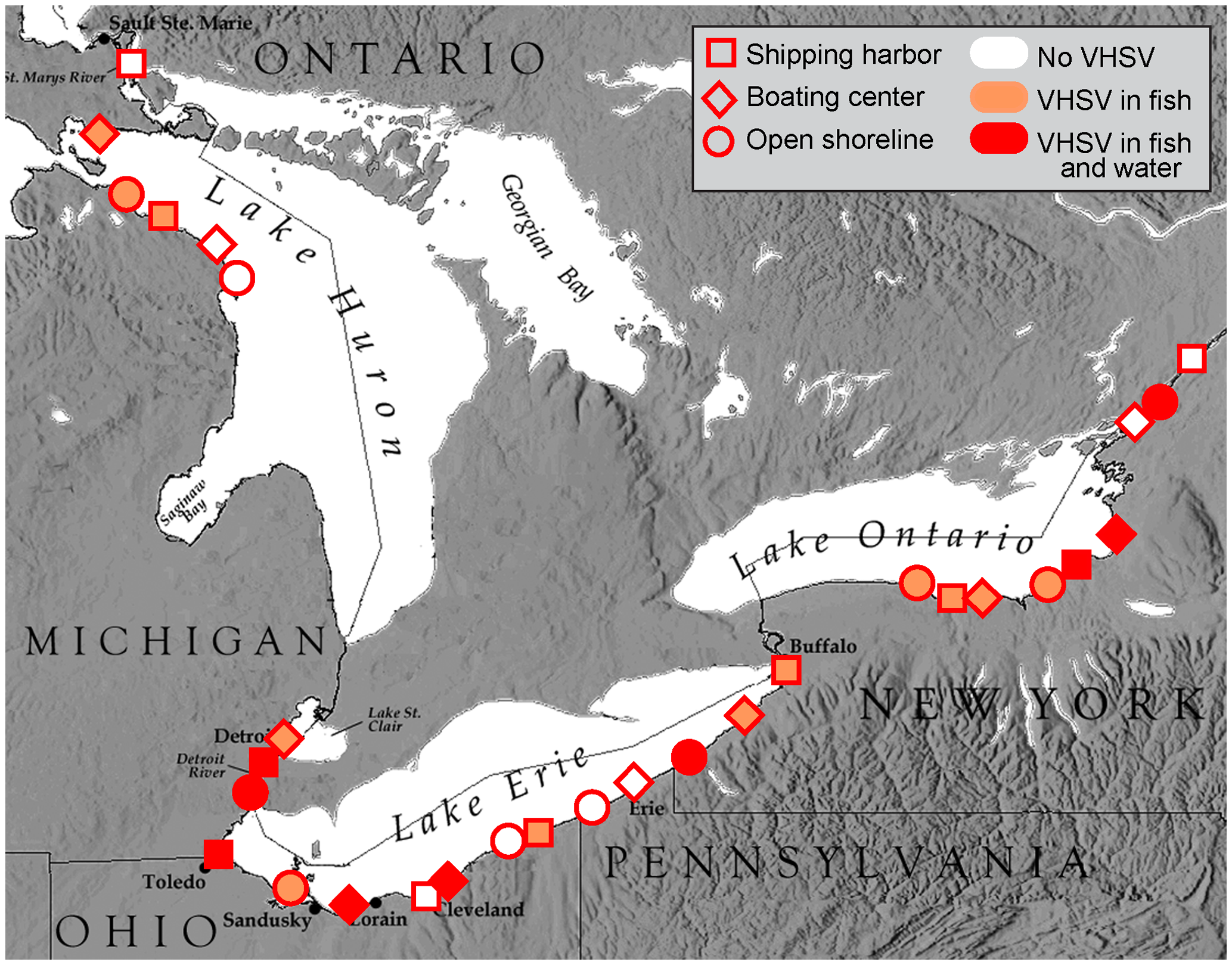We recently wrote about a study by the University of Wisconsin–Superior‘s Lake Superior Research Institute (LSRI) that highlighted the ability of cargo ships to transport invasive species via ballast water. This water, held in the base of cargo ships for stabilizing the ship when not loaded, often carries organisms and sediments from region to region, even within the Great Lakes. The Canadian Federal Government does have some ballast water management practices in place for cargo ships coming through the St. Lawrence Seaway into the Laurentian Great Lakes.
Ships must exchange their ballast water at least 200 nautical miles off-shore in ocean waters that are at least 2000 meters deep. The hope is that any fresh-water species held in the ballast will not be able to survive the high salinity waters and thus be rendered harmless when flushed out of the ballast; however, high seas and strong winds can result in this practice being unfeasible. Furthermore, some freshwater species live part of their lives in seawater, and thus are unaffected by such marine flushing (for example the invasive sea lamprey). Other methods involve treatment of ballast water as it enters the ballast, or during transport, but these treatments are voluntary and many are still being developed under international standards set by the International Maritime Organization.

Some invasive species have already made their way into the Laurentian Great Lakes and although extensive ballast water management protocols are in place for ships entering the region, there are not yet effective systems to prevent the spread of invasive species from one lake to the next. It would appear that ballast water management is on the radar for several researchers in the Great Lakes Region. In their study published in 2014, Jennifer L. Sieracki, Jonathan M. Bossenbroek and W. Lindsay Chadderton determined that ship ballast water has the potential to transport invasive species quickly and extensively throughout the Great Lakes.

The predictive model was built based on their previous model for the spread of a much smaller but equally damaging invader, Viral Hemmorrhagic Septicemia Virus (VHSV). In the 1980s, VHSV was mainly found in the freshwater systems of Europe but increased shipping has lead to the spread of VHSV to a variety of species across the entire Northern Hemisphere. VHSV in the Great Lakes had previously only been tracked based on large die-offs caused by the virus in 2005 in Lake Ontario and from 2006-2008 in Lakes Michigan, Erie and St.Claire. A study by Mark B. Bain et al. published in 2010 showed that ballast water not only transports invasive aquatic animal species but is a significant factor in the spread of aquatic pathogens, in particular VHSV, throughout the Great Lakes. They showed that VHSV was widely dispersed and regularly effected species in a district or season but also existed as temporary outbreaks in some populations.

All-in-all, ballast water is something worth managing, not only between regions but within them. Environmental agencies from both Canada and the U.S. are working together to prevent further damage due to ballast water transport within the Laurentian Great Lakes. A 2016 report was created by the Great Lakes Seaway Ballast Water Working Group (BWWG), comprised of representatives from the United States Coast Guard (USCG), the U.S. Saint Lawrence Seaway Development Corporation (SLSDC), Transport Canada – Marine Safety & Security (TCMSS), and the Canadian St. Lawrence Seaway Management Corporation (SLSMC). The BWWG aim “to develop, enhance, and coordinate binational compliance and enforcement efforts to reduce the introduction of aquatic invasive species via ballast water and residuals.” As further studies are conducted on the subject, hopefully an effective system can be developed to manage the spread of invasive species and aquatic pathogens within the Laurentian Great Lakes.